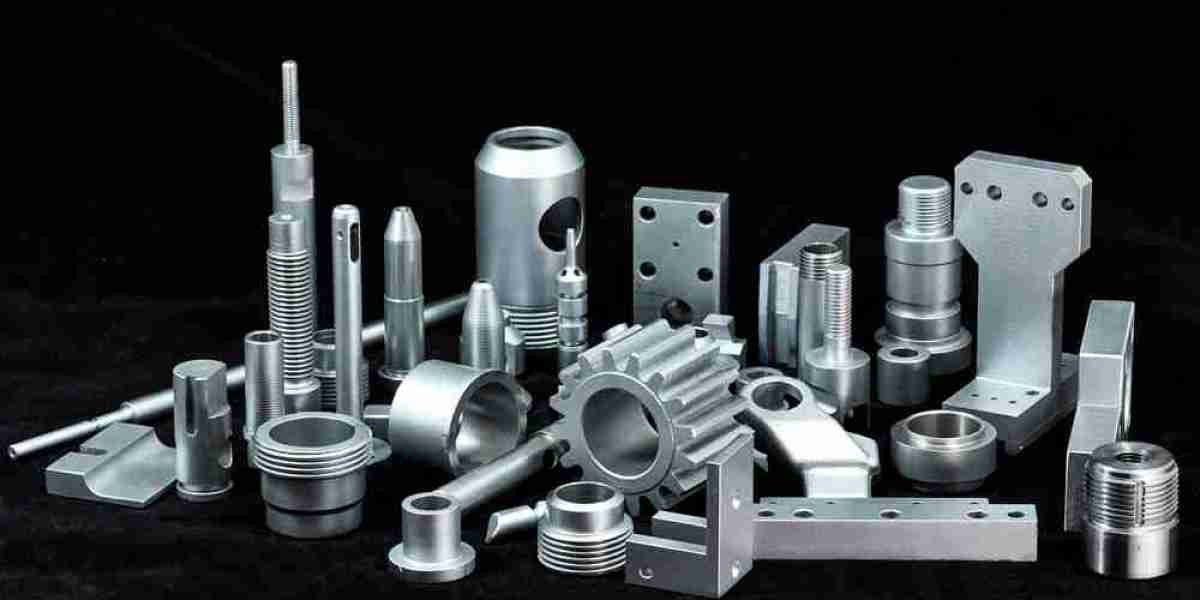CNC (Computer Numerical Control) machining is a highly efficient and precise manufacturing process used to create intricate parts and components for various industries. From aerospace to automotive, CNC machining has become a cornerstone of modern manufacturing, providing unparalleled accuracy and flexibility. This article delves into the world of CNC Machining Parts , exploring its processes, benefits, materials, applications, and future trends.
What is CNC Machining?
Definition
CNC machining is a subtractive manufacturing process that utilizes computer-controlled tools to remove material from a workpiece. The process transforms a digital design (usually created using CAD software) into a physical part by following a predetermined set of commands.
How CNC Machining Works
Design Creation: The process begins with the design of a part using CAD software, where engineers define the specifications, dimensions, and features.
Programming: The CAD model is converted into a CNC program, typically in G-code, which dictates how the machine should move and operate.
Machining Setup: The CNC machine is set up with the appropriate tools, fixtures, and workpiece material.
Machining Process: The CNC machine executes the programmed instructions, using tools like mills, lathes, or routers to cut away material and create the desired part.
Finishing Touches: After machining, parts may undergo additional processes such as polishing, coating, or assembly to meet specific requirements.
Benefits of CNC Machining
Precision and Accuracy
CNC machining provides extremely high levels of precision, often within tolerances of ±0.001 inches or better. This accuracy is essential for industries where even the slightest deviation can result in failure.
Efficiency and Speed
CNC machines can operate continuously, producing parts at a faster rate compared to manual machining. This efficiency leads to shorter lead times and lower production costs.
Flexibility in Production
CNC machining is highly versatile, capable of producing a wide range of parts with varying complexities. This adaptability allows manufacturers to switch between different products without extensive reconfiguration.
Automation and Consistency
The automated nature of CNC machining minimizes human error, ensuring consistent quality across batches of parts. This reliability is crucial for maintaining standards in mass production.
Common CNC Machining Processes
Milling
Milling involves the use of rotating cutting tools to remove material from a stationary workpiece. It is one of the most common CNC machining processes and is used to create complex shapes and features.
Turning
Turning is a process that involves rotating the workpiece against a stationary cutting tool. It is typically used for cylindrical parts and is performed on a CNC lathe.
Drilling
Drilling is a CNC machining process used to create holes in a workpiece. CNC drilling machines can produce holes with high precision and are often used in conjunction with milling and turning operations.
EDM (Electrical Discharge Machining)
EDM uses electrical discharges to erode material from a workpiece. This process is particularly useful for creating intricate shapes and features in hard materials.
3D Printing
While not traditionally classified under CNC machining, advanced CNC machines can integrate additive manufacturing processes to produce parts layer by layer, expanding design possibilities.
Materials Used in CNC Machining
Metals
Aluminum: Lightweight and corrosion-resistant, aluminum is commonly used in aerospace, automotive, and consumer products.
Steel: Known for its strength and durability, steel is widely used in construction, automotive, and machinery components.
Titanium: High strength-to-weight ratio and corrosion resistance make titanium ideal for aerospace and medical applications.
Plastics
Acrylic: Known for its clarity and impact resistance, acrylic is used in signage, displays, and protective covers.
Polycarbonate: Highly durable and heat-resistant, polycarbonate is commonly used in automotive and electronic applications.
Nylon: With excellent wear resistance and low friction, nylon is ideal for gears, bearings, and other mechanical parts.
Composites
CNC machining can also process composite materials, which combine two or more materials to achieve desirable properties. Common composites include carbon fiber and fiberglass.
Applications of CNC Machining
Aerospace Industry
CNC machining is critical in the aerospace industry for producing lightweight, high-strength components such as brackets, housings, and engine parts.
Automotive Industry
The automotive sector relies on CNC machining for precision parts like engine components, transmission parts, and custom fixtures, enhancing performance and safety.
Medical Devices
In the medical field, CNC machining produces surgical instruments, implants, and prosthetics with stringent quality standards and precise tolerances.
Electronics
CNC machining is used to create enclosures, housings, and intricate components for electronic devices, ensuring reliability and performance.
Consumer Products
From kitchenware to furniture, CNC machining allows for the production of high-quality consumer products with complex designs and consistent quality.
Challenges in CNC Machining
High Initial Costs
Investing in CNC machines and technology can be costly, making it challenging for small manufacturers to enter the market.
Skilled Labor Shortage
While CNC machines automate many processes, skilled operators are still needed to program, set up, and maintain the machines, leading to a talent gap in the industry.
Material Limitations
Certain materials can pose challenges during CNC machining, including those that are difficult to cut or require specialized tooling.
Future Trends in CNC Machining
Industry 4.0 Integration
The future of CNC machining is likely to see greater integration with Industry 4.0 concepts, including IoT connectivity, real-time data analytics, and automated workflows to enhance efficiency and monitoring.
Advanced Materials
Research into new materials, such as lightweight alloys and advanced composites, will continue to drive innovation in CNC machining, enabling the production of more complex and efficient parts.
Sustainability Practices
As environmental concerns grow, CNC machining will increasingly focus on sustainable practices, including waste reduction, energy efficiency, and the use of eco-friendly materials.
Customization and Additive Manufacturing
The integration of CNC machining with additive manufacturing will allow for greater customization and complexity in designs, expanding the capabilities of manufacturers.
Conclusion
CNC machining plays a pivotal role in modern manufacturing, offering unparalleled precision, efficiency, and flexibility. Its applications span various industries, making it an essential process for producing high-quality parts and components. As technology continues to advance, CNC machining will evolve, incorporating new materials, innovative techniques, and sustainability practices. For businesses looking to stay competitive, embracing CNC machining and understanding its capabilities will be crucial for success in today’s dynamic marketplace. Whether you are in aerospace, automotive, or any other industry, CNC machining remains a fundamental pillar of manufacturing excellence


